MOBA Gaming Performance – Is The NVIDIA GeForce GTX 950 Worth It?
AMD Radeon HD 6950 versus NVIDIA GeForce GTX 950
I actually don’t like the MOBA abbreviation because it describes too little of a class of overwhelmingly complex games. I have had a bit of a head start dealing with that complexity having played DotA longer than the MOBA abbreviation and even the company that forced that term into existence. Way back then, Defense of the Ancients was a custom game mode, a mod, for WarCraft III. The first match I ever played was in 2006 on DotA Allstars. I picked Nevermore the Shadow Fiend. It went very badly.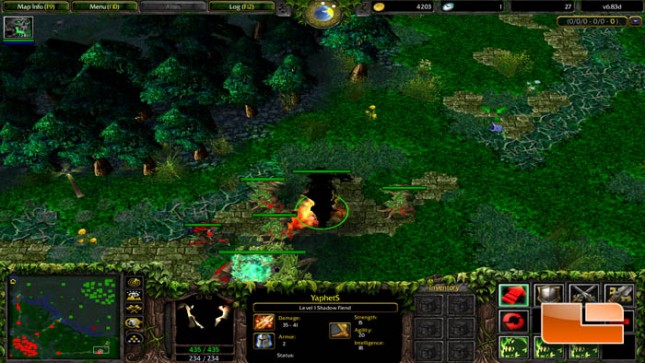
I continued to occasionally play DotA, though more frequently played tower defense games on WarCraft III Battle.net and a certain free-to-play 2D side-scrolling Korean MMORPG. It wasn’t until I got into the Heroes of Newerth closed beta in March 2010 that I began to play MOBA games almost exclusively. HoN as it was frequently called was being developed as a standalone clone of DotA while improving upon the limitations of the WarCraft III engine. The game brought features now taken for granted for any other standalone MOBA title such as dedicated host servers, matchmaking, punishments for intentional disconnections, and modern graphics. For a while, it looked like Heroes of Newerth and its indie developer studio S2 Games had a future. Heroes of Newerth was officially launched in May 2010 for $30 and unsurprisingly, a substantial number of players left as the free beta period ended. What came next was even more unfortunate for S2 Games. Competition and bad decision making would only make the bleeding worse.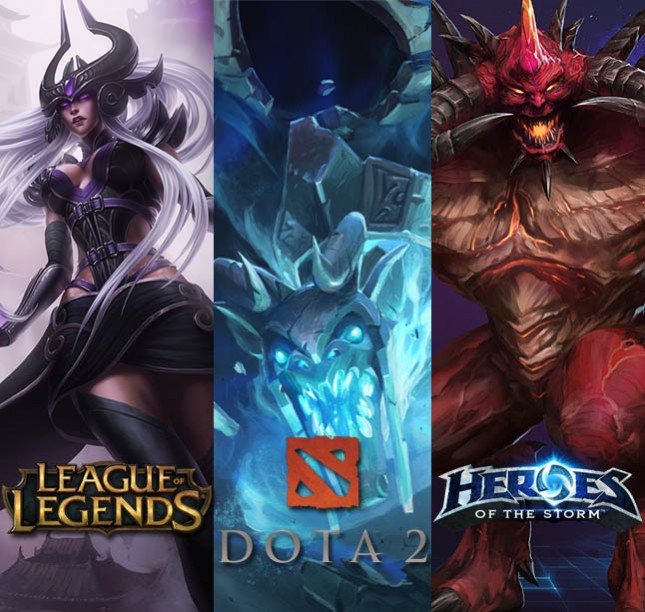
Back in April 2009, when Heroes of Newerth was first launched into beta, another indie game company also launched their own DotA-like game into beta. This studio called Riot Games, who introduced the MOBA acronym, didn’t have the money or manpower to make a modern looking game. Their approach for their game called League of Legends was to focus less on technicals and more on gameplay, by improving on the elements that made DotA so hard to learn in the first place. The result was a watered down image of DotA that ran in a decrepit game engine and featured characters depicted in a laughably bad comical art style (see the comparison picture of Soraka before and after her visual update in 2012 below.) The hope League of Legends had for its survival was its more straightforward game design compared to its two competitors, DotA and HoN, and its grindwall free-to-play payment model.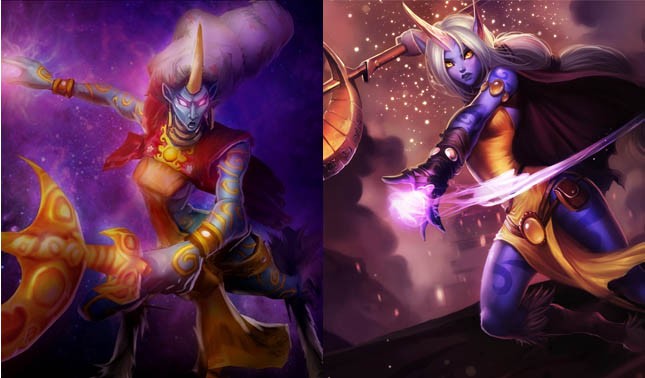
Late in 2010, rumors and hints of an official DotA remake from Valve surfaced and S2 Games quickly abandoned porting DotA characters. In July 2011, HoN switched to the same free-to-play model used by League of Legends which by this time was well beyond critical mass and was a sensation around the world. Yet, S2 Game’s subtle, but at the same time egregious freemium strategy newly released characters were consistently overpowered, but locked behind paywalls only worked against them. In August 2011, Heroes of Newerth’s path to obscurity was inevitable when Valve’s Dota 2 beta was officially announced and launched.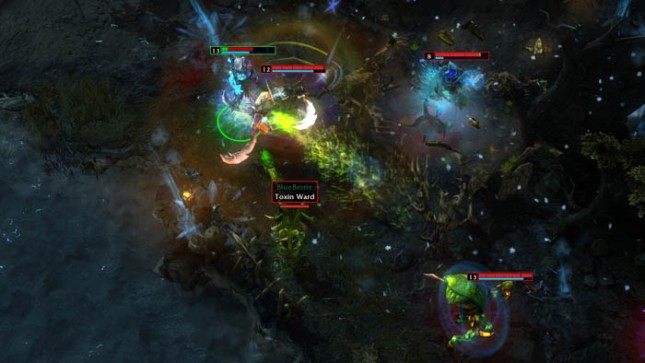
During those years, I still played HoN. The DotA roots still ran deep in HoN’s game design and its standalone features made it more attractive than playing DotA with the unpredictable Battle.net community. My previous one day experience with League of Legends in December 2010 did not capture my commitment and I would not actually play that game again until 2013. It was the anticipation of the official DotA remake from the likes of Valve that had me excited. In November 2011, I got an XFX Radeon HD 6950 in anticipation of Dota 2. In December 2011, I opened an email containing my Dota 2 beta key.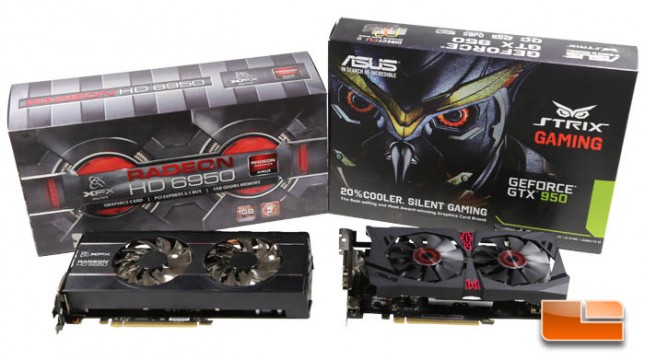
I have been playing Dota 2 for nearly four years. I have largely had no need to upgrade my gaming desktop PC during that time because more than 95% of my gaming time is on Dota 2. It’s an incredibly competitive and replayable game with lots of gameplay elements worth improving upon. The commitment players make to learn how to play MOBA games is why there is so little room for competing titles. EA canceled Dawngate for that reason.
Despite being one amongst the tens of millions of gamers worldwide who enjoys playing MOBA games, I’m the only Legit Reviews writer as far as we know who plays Dota 2 and League of Legends. When our Editor-in-Chief learned of the NVIDIA GeForce GTX 950 was coming to market with MOBA optimizations, he thought it would be a great idea to get me involved despite my four year old PC hardware.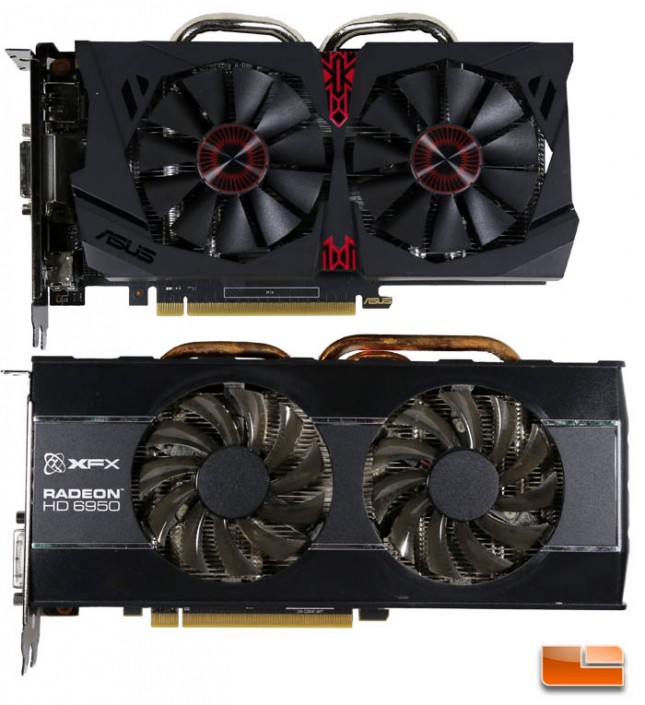
The Cayman Pro and the AMD Radeon HD 6950 made their first appearance in December 2010 nearly half a decade ago. The HD 6000 series were the last to use ATI’s VLIW GPU architecture and was succeeded by GCN with the HD 7000 series in 2012. In retrospect, the AMD HD 6000 series GPUs didn’t bring anything revolutionary to the table, but the VLIW design was so solid that it stood up very well to Nvidia’s Fermi GPUs (sometimes jokingly called Thermi) in the GeForce 400 and 500 families. It would be the Kepler GPU architecture and the GeForce 600 series where NVIDIA would finally score big on performance-per-watt. This particular Radeon HD 6950 that I have is the 1 GB VRAM variant featuring XFX’s Double Dissipation custom cooler which costed $239 in November 2011. During those heydays, the HD 6950 was comparable to the GTX 560 Ti.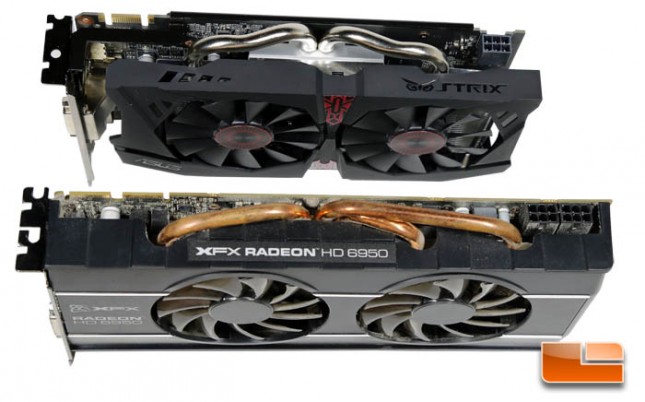
Up against my trusty four-year-old HD 6950 1GB is NVIDIA’s spanking brand-new GTX 950 2GB. This is what happens when I ask the editor-in-chief to do an extensive MOBA game performance analysis and instead it comes around back to me years later. Whatever. I’m happy because not only do I have a new video card, I also get to do graphics performance tests on the games I play the most. We’ll just have to deal with the awful fact that two vastly different video cards are being compared. It turned out okay though and the results are kind of surprising.
| XFX Radeon HD 6950 1GB | ASUS STRIX GTX 950 2GB | |
| Codename | Cayman Pro | GM206 |
| Fab Process | 40 nm | 28 nm |
| Transistors | 2.64 Billion | 2.94 Billion |
| Core Clock | 800 MHz | 1140 MHz / 1329 MHz Boost |
| Memory | 1024 MB | 2048 MB |
| GDDR5 Memory Clock | 1250 MHz | 1653 MHz |
| Memory Bus Width | 256-bit | 128-bit |
| Memory Bandwidth | 160.0 GB/s |
105.6 GB/s
|
| Texture Fillrate | 70.4 GT/s | 49.2 GT/s |
| Typical Board Power (TDP) | 200 Watts | 90 Watts |
| GPU Launch Date | Dec 15, 2010 | Aug 20, 2015 |
| GPU Launch Price | $259 | $159 ($169 for ASUS STRIX) |
